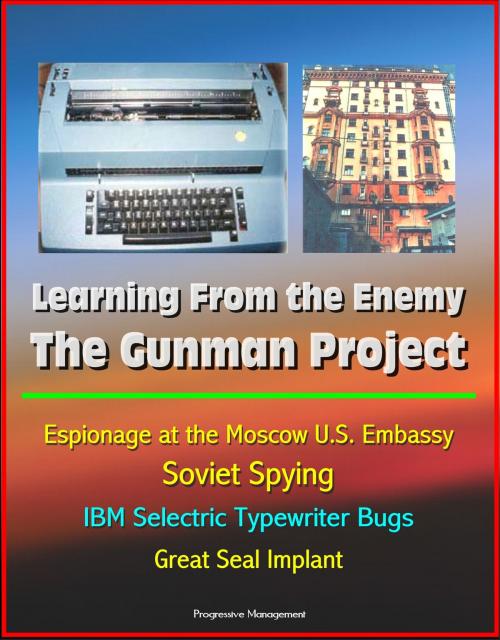Learning From the Enemy: The Gunman Project - Espionage at the Moscow U.S. Embassy, Soviet Spying, IBM Selectric Typewriter Bugs, Great Seal Implant
Nonfiction, Social & Cultural Studies, Political Science, International| Author: | Progressive Management | ISBN: | 9781310860683 |
| Publisher: | Progressive Management | Publication: | April 26, 2014 |
| Imprint: | Smashwords Edition | Language: | English |
| Author: | Progressive Management |
| ISBN: | 9781310860683 |
| Publisher: | Progressive Management |
| Publication: | April 26, 2014 |
| Imprint: | Smashwords Edition |
| Language: | English |
This NSA paper examines the nature of the Soviet electronic penetration and the damage assessment of Soviet access to typewriters at the U.S. embassy in Moscow. This history of Project GUNMAN will also answer such questions as how the typewriter bugs were discovered and how they worked.
Countries have spied on each other by gathering information from embassies for centuries. The United States and the Soviet Union were of course archenemies during the Cold War (1945 to the fall of the Soviet Union in 1991), and there is a long history of attempts by the Soviets to gain access to information from the U.S. embassy and its diplomatic apparatus. Perhaps the most famous incident of Soviet espionage was the Great Seal implant.
On 4 August 1945, Soviet schoolchildren presented a carving of the Great Seal of the U.S. to Averell Harriman, the U.S. ambassador to the Soviet Union. The carving hung in Spaso house, the ambassador's residential office in Moscow, until 1952, when the U.S. State Department discovered that there was a microphone hidden inside the carving that the Soviets turned on at will. This bug was not a standard microphone and could not be detected unless it was in use. For six years the Soviets were able to eavesdrop on the conversations of the U.S. ambassador. The Soviet threat to U.S. embassy security was both well documented and real.
The typewriter bugs marked a new level of sophistication because they were electromechanical. For the first time, the Soviets gathered information from a piece of equipment that held written plain text information. Prior to the discovery of these bugs, the U.S. believed that the Russians had only used room audio bugs with microphones or listening devices to eavesdrop on American embassy activities. As a totalitarian society, the Soviet Union valued eavesdropping and thus developed ingenious methods to accomplish it.
This NSA paper examines the nature of the Soviet electronic penetration and the damage assessment of Soviet access to typewriters at the U.S. embassy in Moscow. This history of Project GUNMAN will also answer such questions as how the typewriter bugs were discovered and how they worked.
Countries have spied on each other by gathering information from embassies for centuries. The United States and the Soviet Union were of course archenemies during the Cold War (1945 to the fall of the Soviet Union in 1991), and there is a long history of attempts by the Soviets to gain access to information from the U.S. embassy and its diplomatic apparatus. Perhaps the most famous incident of Soviet espionage was the Great Seal implant.
On 4 August 1945, Soviet schoolchildren presented a carving of the Great Seal of the U.S. to Averell Harriman, the U.S. ambassador to the Soviet Union. The carving hung in Spaso house, the ambassador's residential office in Moscow, until 1952, when the U.S. State Department discovered that there was a microphone hidden inside the carving that the Soviets turned on at will. This bug was not a standard microphone and could not be detected unless it was in use. For six years the Soviets were able to eavesdrop on the conversations of the U.S. ambassador. The Soviet threat to U.S. embassy security was both well documented and real.
The typewriter bugs marked a new level of sophistication because they were electromechanical. For the first time, the Soviets gathered information from a piece of equipment that held written plain text information. Prior to the discovery of these bugs, the U.S. believed that the Russians had only used room audio bugs with microphones or listening devices to eavesdrop on American embassy activities. As a totalitarian society, the Soviet Union valued eavesdropping and thus developed ingenious methods to accomplish it.















